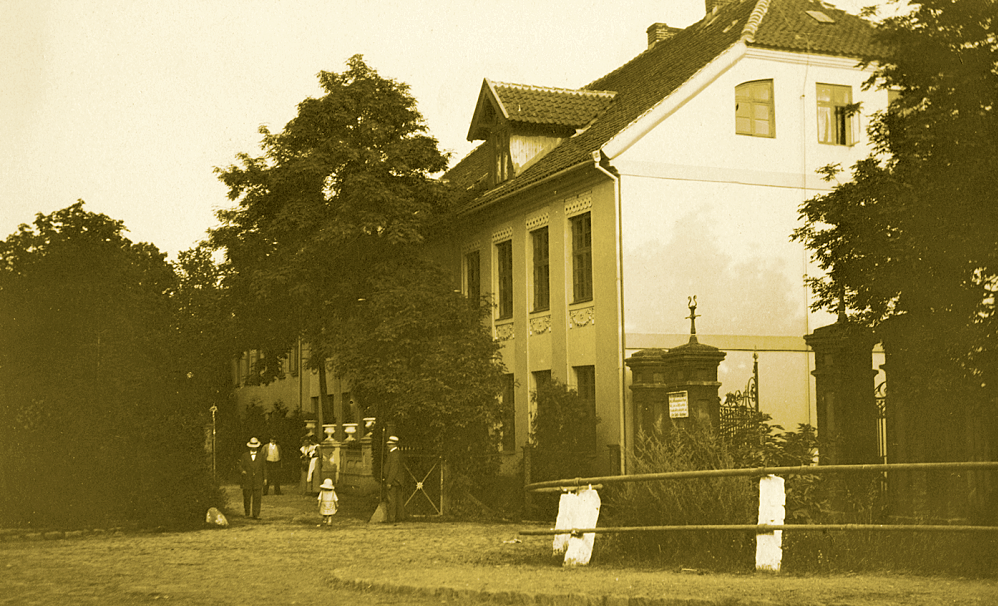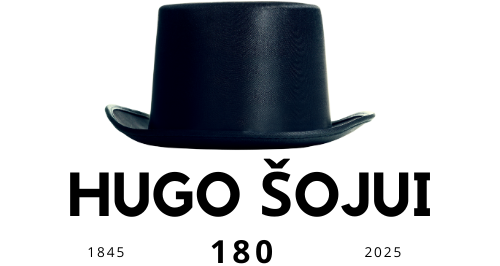
First steps towards establishing the museum
Šilutė Hugo Šojus museum's history begins in the late 19th century when, in 1889, a nobleman from Klaipėda, Hugo Šojus (Hugo Scheu), bought the old manor in Šilokarčema. He was one of the most renowned figures in the Klaipėda region, notable for his contributions to the economic and cultural life of East Prussia. Observing the rapid disappearance of traditions and businesses due to the industrial revolution in the 19th century, he began collecting ethnographic material from the Klaipėda region and folklore in two rooms of his manor.
The manor museum accumulated a collection of ethnographic furniture, clothing, documents, publications, and maps. A particularly large number of old Lithuanian clothing and textile samples were gathered. This was the first museum in the Klaipėda region and it was accessible to the intelligentsia and scholars.
Destroyed exhibits
During World War II, the manor museum formed by father and son Šojus suffered greatly. The accumulated artifacts, left without care after the manor's heir, Werner, fled to Germany, were largely neglected. Both the manor and its museum were severely damaged by the Red Army stationed there. This is evidenced by the notes of the first curator of the manor's collection, Klaipėda native Martynas Toleikis, who was appointed on February 19, 1945: “A large portion of the exhibits were thrown on the floor and mixed with garbage…” In the same February, M. Toleikis was appointed the chief preparator of the Šilutė Ethnographic Museum, and the museum was transferred to the Lithuanian Academy of Sciences.
Rebirth of the museum
In August 1948, the manor buildings were handed over to the horticulture and beekeeping school, which had previously been located in Kretinga. At that time, the museum was moved to a house in the center of Šilutė, at Lietuvininkų St. 36. On November 7, 1949, a ceremonial opening took place. The museum was given a new name – the Šilutė Regional Museum. Teacher M. Jonaitis was appointed as the museum director. At that time, the museum had 718 exhibits.
From 1956 to 1961, archaeologist J. Kvilonaitė served as the museum director and focused greatly on the restoration of archaeological monuments. The formation of the museum's collections was significantly influenced by the activities of director D. Lukoševičiūtė-Narbutienė, who served from 1961 to 1987. During this period, expeditions were actively organized, resulting in the accumulation of valuable collections of regional household items, fishing tools, agricultural implements, and publications.
In 1965, by order of the Ministry of Culture, the Šilutė Regional Museum became a branch of the Klaipėda Regional Museum. This reorganization was not beneficial for the museum. The situation of this cultural hub worsened even more in 1972 when the Klaipėda Regional Museum came under the authority of the Klaipėda Executive Committee. Eight years later, the main exhibitions of the Šilutė Museum were closed.
Independence period
In 1990, with the declaration of Lithuania's independence, the Šilutė District Municipality became the founder of the museum. It was given a new name – the Šilutė Museum. Along with the name change, significant transformations occurred within the museum – new exhibitions were prepared, and the most valuable items from Hugo Šojus's collection began to be displayed. Museum branches were established in Kintai, Bitėnai, Švėkšna, Žemaičių Naumiestis, and Macikai village. This created a network of district museums reflecting the historical development of the region. The Šilutė Museum retained this name for over two decades. It was only on April 9, 2015, that it was renamed the Šilutė Hugo Šojus Museum.
Museum renaissance
One of the most significant dates in the museum's history is May 30, 2015. On that day, during the Šilutė City Festival, the grand opening ribbon of the manor was ceremoniously cut, and the keys to the restored Hugo Šojus Manor were handed over to the museum staff. A vision nurtured for many decades finally came to fruition, and the museum's identity was fully established. Even H. Šojus himself once said that a museum without the manor house is unimaginable. His vision has been fulfilled, and the museum staff are delighted to present the preserved relics collected by the Šilutė patron and other historical treasures to the public.
Currently, the manor building complex houses a museum, a restoration and education center with workshops where textile, metal, and paper restorers work, as well as an education classroom. The manor also hosts the museum's internal library and archive.
Currently, the museum and its branches have amassed a collection of 60,150 exhibits
The Hugo Šojus Manor, known as the gem of Šilutė, awaits you.Experience the history of Minor Lithuania at theHugo Šojus Manor, known as the gem of Šilutė.
